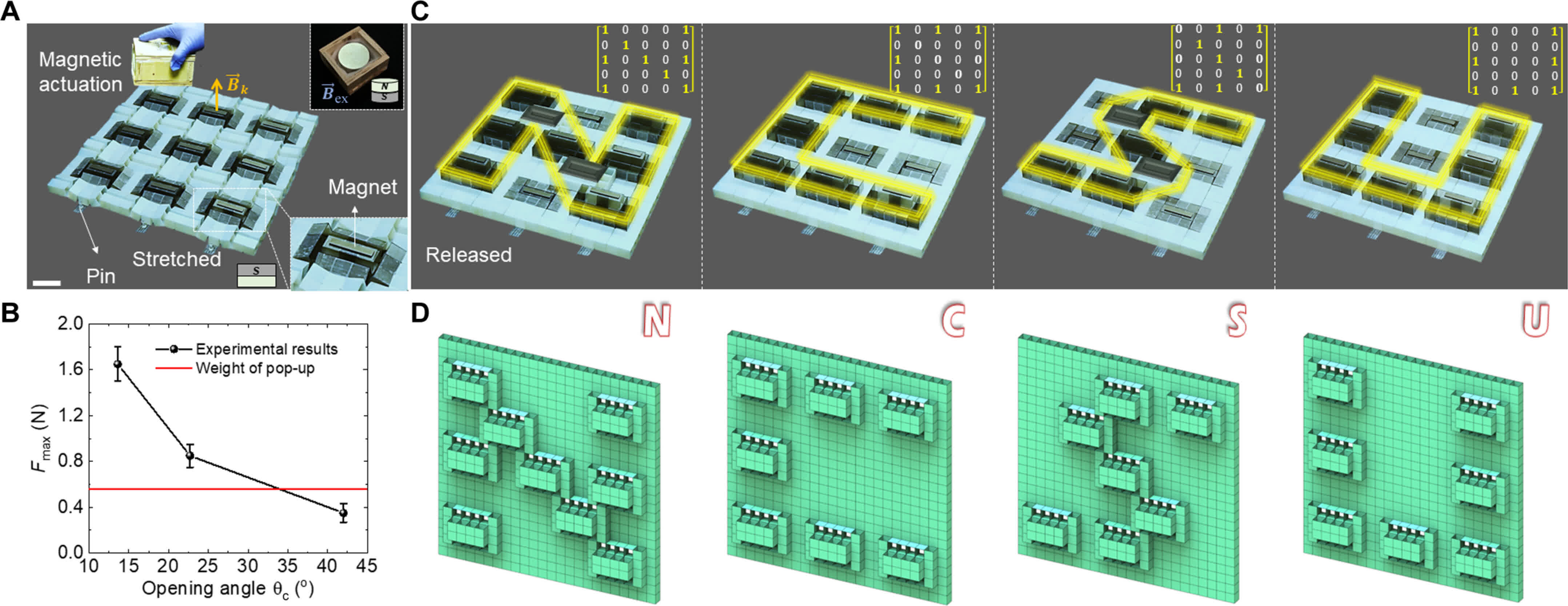
In a nutshell: In a global the place computer systems stay getting smaller and extra compact, researchers at North Carolina State College have long gone in the other way. They have got created a mechanical pc that calls for bodily pushing and pulling to enter, retailer, and manipulate knowledge. It accomplishes this the usage of patterns of inflexible plastic cubes, totally ditching silicon chips and electronics.
The fundamental construction blocks are 1-centimeter polymer cubes joined in combination into purposeful gadgets of 64 interconnected cubes. The cubes are related by means of stretchy elastic tape that permits the buildings to be reconfigured by means of pulling at the edges. Whilst you let move, the tape contracts and lock the brand new dice positions in position, similar to a 3-d puzzle.
The upward and downward positions of the person cubes inside each and every 64-cube unit necessarily act because the 1s and 0s of binary knowledge. Through pushing a dice up or down, you might be writing just a little. Chain more than one gadgets in combination, and you’ll encode extra advanced knowledge the usage of the proper geometry of the 3-d construction.
The device will also be arrange for handbook keep an eye on by means of pushing the cubes round at once, or you’ll use a magnetic plate to remotely reconfigure the buildings with magnetic fields.

The foundation got here from the Eastern artwork of kirigami, which comes to intricate slicing and folding of paper. Through making use of those self same folding ideas to 3-d fabrics like those dice grids, the researchers unlocked a mind-boggling collection of conceivable configurations to constitute knowledge.
For example, with only a easy nine-unit cluster, there are over 362,000 conceivable binary configurations to play with. Alternatively, the researchers say the prospective is going a long way past simply binary encoding. The cubes can stack as much as 5 top, opening the door to garage schemes that crunch considerably extra knowledge in line with unit.
Learn about co-author Yanbin Li noted that having the ability to create distinctive 3-d knowledge architectures may just permit fully new kinds of encryption and bodily passwords. The staff additionally imagines those transformable 3-d buildings will have packages in haptic computing and interfaces that put across knowledge thru bodily shapes slightly than pixels.
In fact, that is nonetheless extraordinarily early-stage analysis. The present kirigami prototypes merely reveal the underlying mechanical ideas – in fact creating coding architectures and person interfaces is a complete different problem.
You’ll be able to discover the workings of this gadget additional within the paper, “Reprogrammable and Reconfigurable Mechanical Computing Metastructures with Strong and Top-Density Reminiscence,” published within the magazine Science Advances.

Leave a Reply